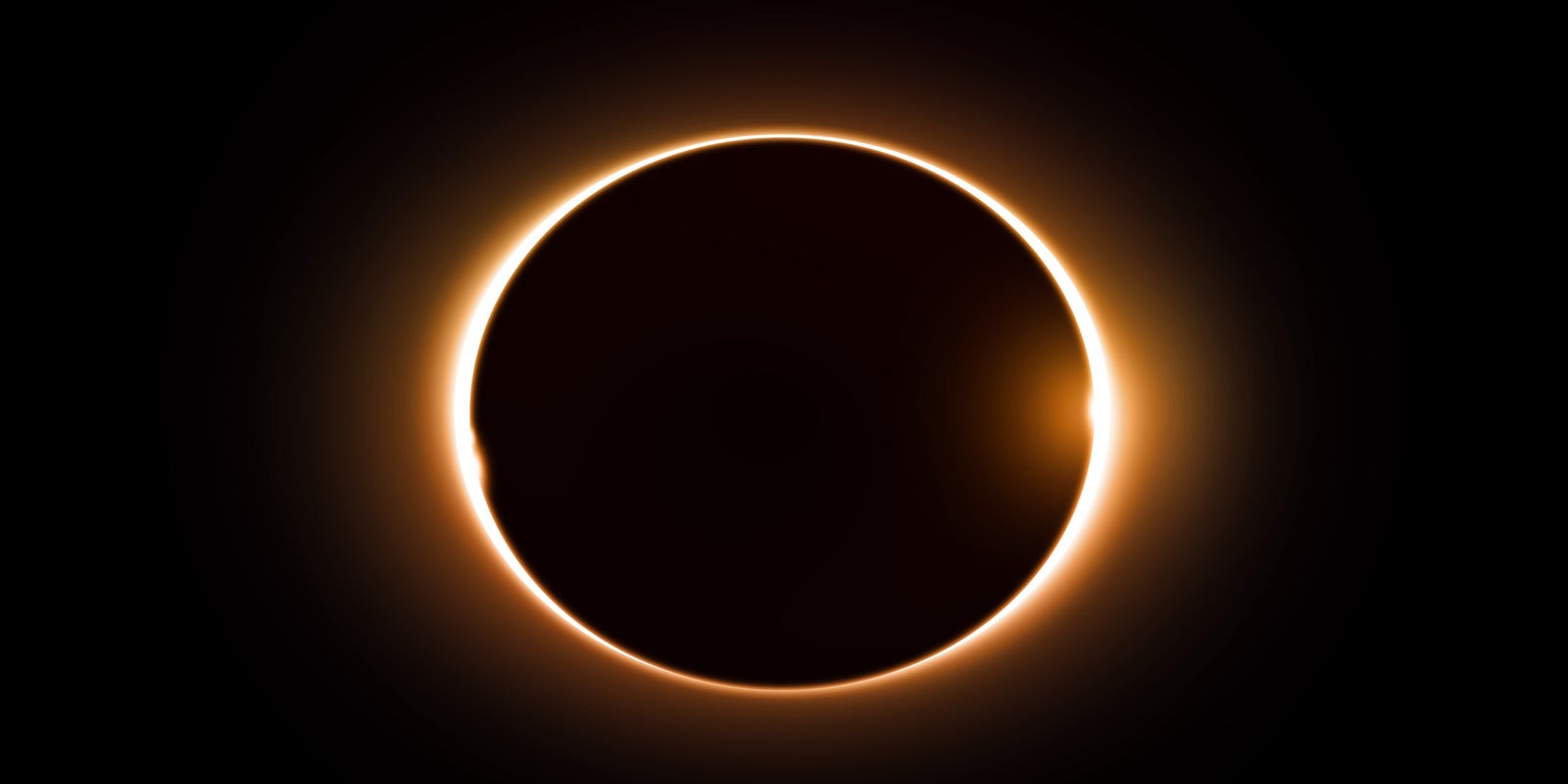They are almost exactly the same size, perceptually speaking here of course.
Your head is about the same size as the moon on that basis
Maybe you could if the angle was right.
To accomplish this, we need:
- Perfect shape match.
- Perfect ratio of size to distance.
- Perfect angular placement.
My head is not a circle, so it is not possible to do this with my head. Getting the ratio of size to distance right is very difficult. So is getting the right angular placement.
For the moon-sun, the sphere just arises because they are both sufficiently large.
The ratio of size to distance is a freak accident. There is no good explanation for why the sun and moon are at essentially the same ratio.
The angularity is surprising too. As I understand it, there is no good explanation for why the moon ever intersects with the placement of the sun. I could have been a different way. Though it is possible I am wrong here (@PdotdQ).
The fact that size/distance of moon = size/distance of sun is pretty surprising. I’m not sure that applies to any other planet-moon combination in the solar system.
You scientists
You are correct in that this is a pretty unique coincidental occurrence. Indeed, due to tidal effects the moon is moving away from the Earth, and in the future the angular size of the moon and the sun will not match anymore.
If there are hyper-technologicaly advanced aliens, I think the Earth during such an eclipse would be one of their popular tourist destination, as these eclipses are quite unique. So, next eclipse, instead of looking at the sky, look around you and perhaps you might find some antennae/tentacles peeking out of people’s clothes.
Note however, that this can be replicated in many Flat Earth models, they just have the sun/moon locations and sizes in such a way that they preserve the angular sizes. Further, some Flat Earth models don’t even agree that eclipses are caused by the moon going over the sun.
I think a dime at arms-length will cover the Moon (one eye). A quarter should do for the sun, but don’t try it without proper eye protection.
In a broadcast seen around the world! … Oh … wait …
It is also worth mentioning that the Moon moves in an elliptical orbit. This means that the Moon doesn’t entirely cover the Sun for some solar eclipses (annular eclipse) and is slightly larger than the Sun for other solar eclipses. However, this is nit picking, so carry on . . .
My favorite models are those where the Moon is projected onto the sky as part of a government conspiracy. If you are going Flat Earth you might as well go full hog.
Steven Balbus has proposed an interesting anthropic explanation:
http://rspa.royalsocietypublishing.org/content/470/2168/20140263
This is really fascinating. If that is true, it seems like life itself would depend on the fine tuning of moon like this, or some other comparable process. Very interesting.
Simon Conway Morris covers similar ground in Life’s Solution, especially regarding the work of Guillermo Gonzalez, and the idea that many of the same characteristics that seem to be required for life also seem to encourage and allow discovery of the universe by that life, despite no inherent evolutionary connection between those two things. Some would say it’s just a coincidence that the one place (and time, roughly) in the solar system where total solar eclipses can be observed is the one place (and time, roughly) in the solar system where there are observers, and others would say it’s a teleological clue.
I would note that the particular image seems significant to us, but we lack other experience. Imagine for example if the moon were relatively smaller. The imagery of an eclipse would still be very interesting, and we may well say “if the moon were bigger we could never see that.”
This is true, however there are also scientifically valuable aspects of the specific phenomenon of a total solar eclipse, since the solar disk is obscured but not the (otherwise invisible) solar atmosphere, which has enhanced the ability to study the sun’s atmosphere and other characteristics, thus learning by proxy things about all the other stars in the galaxy. It has also allowed confirmation of Einstein’s theories by measuring the sun’s effect on nearby stars which are otherwise invisible, all of which would not be possible with a relatively smaller and/or relatively farther moon.
Those are interesting things, but would seem to be well described as coincidences.
A post was merged into an existing topic: Greg Cootsona: What About Intelligent Design?
